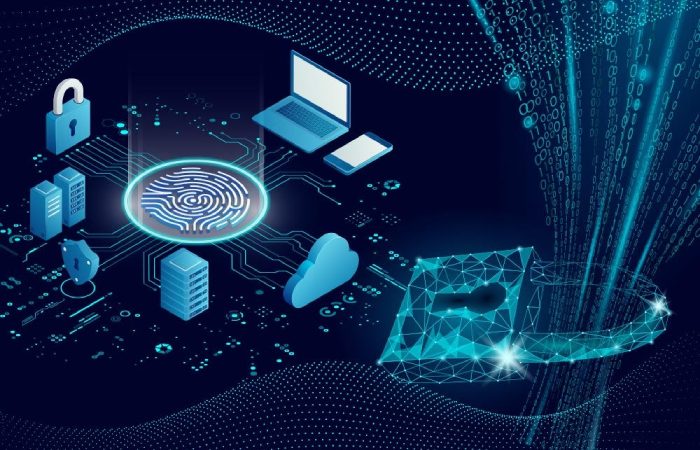The Internet of Things IoT Security Solutions transforms sectors and everyday habits by connecting devices to create more innovative homes, businesses, and creative urban areas. However, the widespread use of IoT devices also increases security vulnerabilities.
Cyberattacks targeting IoT networks can lead to data compromise, service disruption, and even security issues. In this interconnected environment, IoT security measures are necessary and form the basis for establishing trust. Here’s how these solutions protect networks and data, paving the way for the future of IoT.
The Importance of Security
The widespread use of devices has made our lives more comfortable but has also created security threats IoT Security Solutions.
Growing number of interconnected devices
By 2025, it is predicted that there will be more than 30 billion devices in the world. Every device can become a path for hackers. From thermostats to sensors, IoT interconnectivity increases the dangers a single weakness poses.
Consequences of IoT violations
Improper IoT security measures can lead to consequences such as IoT Security Solutions:
Hackers can obtain corporate information illegally. For example, data theft is a key issue in cyber security threats.
Operational disruptions can occur when IoT, manufacturing, or healthcare systems are compromised, resulting in downtime and potential safety risks.
When security breaches occur, and user trust is lost, it can negatively impact a brand’s reputation. Slows down the rate at which people adopt technology or services.
Partnering with an IoT software company ensures security measures are in place to protect connected devices and data and establish trust in the evolving IoT environment.
The Key Issues of Internet of Things Security

Securing Internet of Things (IoT) networks can be challenging due to challenges that make conventional cybersecurity measures insufficient.
Limited device resources
Some Internet of Things (IoT) devices lack the processing power and storage capacity to support encryption or strong security measures IoT Security Solutions.
Lack of standardization
Many companies produce devices with different standards and protocols, leading to compatibility issues and vulnerabilities in the system.
Always connect
Internet of Things (IoT) devices are constantly exposed to security threats due to their network presence and connectivity. The vulnerability of a hacked camera is such that it can serve as an entry point to gain access to the entire home network.
Key IoT Security Solutions
Security best practices remove these barriers. Lay the foundation for a secure IoT environment.
Device authentication
You must ensure that only approved devices can connect to a network successfully, which is protected by security measures such as certificates or biometrics to verify devices and block unauthorized access IoT Security Solutions.
A complex building system verifies the credentials of HVAC systems and security devices, such as lighting fixtures, before granting them access to the network.
Data encryption IoT Security Solutions
Data security is maintained through encryption, which prevents hackers from accessing and reading information sent between devices on systems that use standards such as Advanced Encryption Standards (AES) and transport protocols such as TLS.
Network segmentation IoT Security Solutions
By segmenting networks into partitions, IoT security solutions limit the spread of attacks. If one partition is compromised, the rest of the network remains protected.
In an Internet of Things (IoT) system, the equipment network is separated from the office Wi-Fi to protect operations.
Regular firmware updates IoT Security Solutions
Numerous Internet of Things (IoT) security breaches take advantage of firmware systems. Using security solutions that automatically update firmware helps protect devices from the latest threats.
Machine Learning And AI in IoT Security
AI and ML also improve IoT security by identifying threats early and predicting vulnerabilities.
Threat detection. AI monitors network traffic for anomalies, highlighting unusual activity that could signal a breach. For example, an IoT security system can identify large volumes of data sent from a smart camera, indicating that it has been compromised.
Predictive analytics. Using patterns, machine learning algorithms can classify attacks and predict vulnerabilities that have not yet been exploited. The advantage of this approach is staying ahead of new threats.
IoT Security Use Cases Specific to the Industry IoT Security Solutions

While every industry has unique IoT security challenges, there are tailored solutions to these challenges.
Healthcare: Protecting Patient Data IoT Security Solutions
Connected medical devices like insulin pumps and heart monitors save lives but also need to be secure. Healthcare IoT solutions also focus on data encryption, HIPAA, and other requirements.
Smart cities: ensuring the security of public systems
IoT is the lifeblood of smart cities, controlling everything from traffic lights to power grids. Security solutions protect these systems from all cyberattacks that can cause widespread disruption.
Commerce: Protecting the IoT-Enabled Customer Experience
Retailers are adopting IoT for inventory tracking, personalized shopping, and cashless services. User protection systems protect against data leaks that could compromise customer information.
Addressing the Challenges of Adopting IoT Protection
IoT security is critical, but practical issues can hinder its implementation.
Cost problems. It can be luxurious for small businesses to implement significant security measures. But in reality, the cost of a breach far outweighs the initial investment in security.
Awareness and education. Not all organizations see the risks of IoT vulnerabilities. Awareness is the key. Educating businesses and consumers on security is paramount to widespread adoption.
Conclusion
It builds that trust, and IoT security solutions are the foundation of that trust—connected devices should make our lives easier, not put us at risk.
IoT security is not an option but a necessity for businesses, governments, and individuals. By prioritizing security, we can reap the full benefits of IoT while protecting our networks, data, and future.


